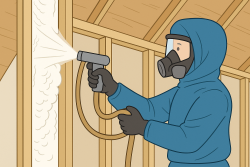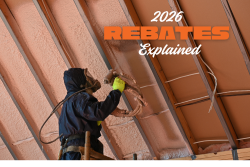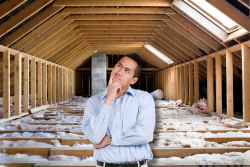Elevated levels of radon are common across many homes in Canada. Radon gas is highly harmful to human health. It can enter homes and other enclosed places through gaps around service lines, joints during construction, and cracks in the foundation's floor and walls. Radon gas has no colour, smell, or taste. Therefore, professional methods are used by specialists to detect radon gas in buildings. This gas causes a significant number of deaths, nearly 16%, through radon gas-induced lung cancer. Homes in Canada that are sealed against various weather elements are vulnerable to radon gas accumulation.
How Radon Gas Enters a Building?
Every building structure has an air pressure difference between the inside and exterior that can be measured. As air escapes from a residential building, air and gases from the soil below, including radon, seep inside the building. Any opening, including outside walls, support beams, the foundation, wall joints, and even floor drains, can facilitate radon gas entry into a building. This gas enters or leaves the building by moving through the ground. It is safe to conclude that cracks, cavities, floor drains and sumps pave the way for radon gas entry into the buildings. Knowing that it is not hard to estimate how we can prevent radon gas from dangerous accumulation inside residential and commercial buildings. This brings us to the next point how to get protection against radon gas.
How to Protect Your Home From Radon Gas Accumulation?
Radon gas can accumulate to dangerously high levels within the home. Long-term radon exposure can harm the DNA in our lung tissue. Hence, Canadians are encouraged to check their houses for radon and take measures to lower elevated gas levels to protect their health. More protective measures for homes are required as per new building codes.
If your home's radon test result is higher than the recommended level of 200 Bq/m3, you should make efforts to reduce it. It is possible to save lives by using effective radon reduction techniques. To determine the most effective strategy to lower the radon level in your house, Health Canada advises hiring a mitigation specialist who has been certified by the C-NRPP (Canadian National Radon Proficiency Program).
Spray Foam Can be Ideal for Radon Mitigation
Did you know the insulation in your home can protect you from weather fluctuations and radon gas? The best option for insulation is widely acknowledged to be spray foam. Furthermore, spray foam produces a continuous air barrier that protects against gases like radon. Spray foam insulation placed correctly can create a solid soil gas barrier under slabs, on foundation walls, and on roofs by expanding into crevices and adhering to structural components. Furthermore, it can eliminate the flaws associated with sealed radon barrier assemblies. Therefore, you are advised to acquire services from radon certified insulation company to ensure correct insulation and complete protection from radon gas toxification.
Reitzel Insulation
Reitzel insulation is a Radon Certified Insulation Company and provides the best home insulation solutions for all your needs.
Contact us to learn more about radon protection. Over 46 years of service to our clients makes us proud.


















